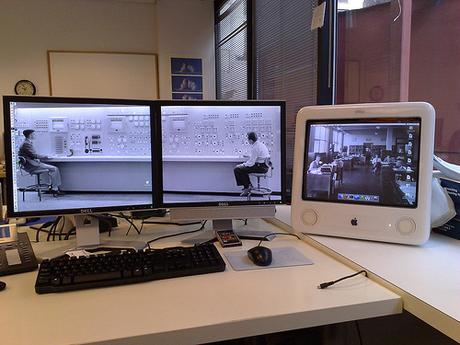 If it isn’t obvious by now, the inherent changes in the marketplace has created a domino effect in business. While the economy has wreaked havoc on the perception of stability in the workplace, companies are also realizing that employee loyalty has also significantly declined. There is a survivalist mentality in the realization that careers within one organization will no longer last a lifetime.
If it isn’t obvious by now, the inherent changes in the marketplace has created a domino effect in business. While the economy has wreaked havoc on the perception of stability in the workplace, companies are also realizing that employee loyalty has also significantly declined. There is a survivalist mentality in the realization that careers within one organization will no longer last a lifetime.
At the same time, changes in technology are also creating new positions that did not exist even a decade ago. The evolution of industry is developing a specialized talent pool that’s both highly in demand and difficult to retain long term within any one company. These days, three to five years in one company is considered “normal,” if not long, tenure.
Companies Are Realizing They Need to Change
These factors, among many, are making businesses rethink how they operate— not only to retain their best employees but also to attract new ones in the process.
The customer is everybody’s responsibility. With the rise of social media, the consumer discussion has moved from platforms to the boardroom. Innovation is happening at lightning speed and corporations must respond just as fast as the markets that are adopting these changes.
We’ve heard the term, “Digital Fluency”. This era of change for companies means they need to close the gap and become more connected to customers and to the market. To be digitally fluent means to have much quicker market response when it comes to reputation, customer service, or just being tapped in to industry trends and emerging discussions.
No longer is one department responsible for the customer. The organization can scale market and customer connections if everyone in the company is listening and tapped in to the marketplace. Digital fluency means technology enablement that will eventually influence cultural and process changes to influence speed to market decisions.
Does technology enable humanity? This is more of a rhetorical question. What I have seen and what I’ve experienced (especially as a start-up with resources and partners working in remote locations) is that by embedding social technology within the organization, you end up with an eventual reduction of hierarchy and breakdown of the physical and departmental silos that impede the need for agility.
And while technology does not have a direct impact on employee engagement, over time the change within the organization will begin to shape the way the organization functions, how people relate to and communicate with one another, and how they perceive work.
I work with a few social business solutions. While social business is still an emerging concept, there is slow but promising adoption of solutions that allow organizations to be nimble and more adaptive to consumers and the market. Post Beyond is an example of solutions that identify and enable employees to be social. These days, social scalability realistically will happen when employees (not the hired intern) leverage their individual networks to spread the company messages.
On the other side, organizations are hesitant to implement solutions without a guarantee of ROI on employee engagement.
I saw Jacob Morgan’s interview with Centro CEO Shawn Riegsecker. For Shawn, he was emphatic in his statement,
“Being engaged does NOT mean you are happy”
Traditionally, it has been commonplace to check your emotions at the door the minute you entered the workplace. No longer is that the case. Organizations are starting to realize that employee happiness is key to productivity, reduced churn, and increased profitability.
There have been endless articles written about the social organization. Companies that truly understand this also know that the up and coming Millennials have grown up with the same technologies that allow them to have conversations and develop relationships across the web. The future managers and leaders mandate the latest technology to facilitate digital water cooler discussions and collaboration that ties employees together, and hastens the movement of information across the company.
How do we measure happiness? There is currently no direct correlation to technology but traditional measures can provide indicators that the company is doing everything right: Low attrition rates, referral percentages, plus the ability to attract the best talent.
But still…. Is there proof of employee engagement?
Data science has the ability to make highly accurate interpretations of human perceptions, personality, and team dynamics by analyzing simple text.
It stands to reason that even in its nascent stages, the use of cognitive systems can measure happiness within departments and across organizations.
I’ve spoken to Co-founder, Jonathan Kreindler, from Receptiviti, a “natural language personality analytics SPI” that can detect human personality, emotion, and tone from unstructured data, email, voice, chat etc. It’s systems such as these that allow companies to have the capability to marry language and psychology with their impact on organizational performance.
If companies need the ROI of social business engagement, we now have the ability to come ever closer to validating this.
Evidence of Happiness Isn’t Necessarily Measured By the Numbers
For those companies trying to understand the value of digital fluency and the impending cultural shifts, there will be more obvious signs that a company is flourishing.
Shawn Riegsecker says this:
“The biggest harm to the organization has traditionally been to increase value to shareholders… That is a very empty way to think about human beings achieving things for the company.”
Over and above culture, systems, and frameworks that need to shift, the soft measures that result from these changes should also be counted. Shawn provided a list of these important traits:
- Does every individual believe the CEO and organization authentically cares about him/her?
- Are people free to do great work?
- Do they have a greater feeling of teamwork and collaboration?
- Do they feel comfortable moving forward without fear of making mistakes?
- Do they have a sense of well being?
- Do they feel they belong?
- Do they have greater friendships at work?
- Is there a greater appreciation from management for the work they do?
- Do they feel empowered to do more and think outside of their immediate responsibility?
- Are they encouraged to be creative?
- Do they have a sense of personal growth?
Technology is not the solution. My belief is that companies will employ technology because the times call for it. What they will witness over time, though, is an inherent change that allows the organization to care about the well-being of its employees—and prioritize this over and above shareholder value.
What do you think? Do we focus too much on technology at the cost of the human beings actually working in our companies? Is happiness valued and promoted where you work? Is your organization “digitally fluent?” I would love you hear your thoughts on this!
Additional Resources on this Topic:
Millennials in the Workforce: What Really Matters To Them
Four Ways to Use Technology In the Workplace to Motivate Employees
How Tech-savvy Millennials Humanize Your Workplace

photo credit: my workplace via photopin (license)

